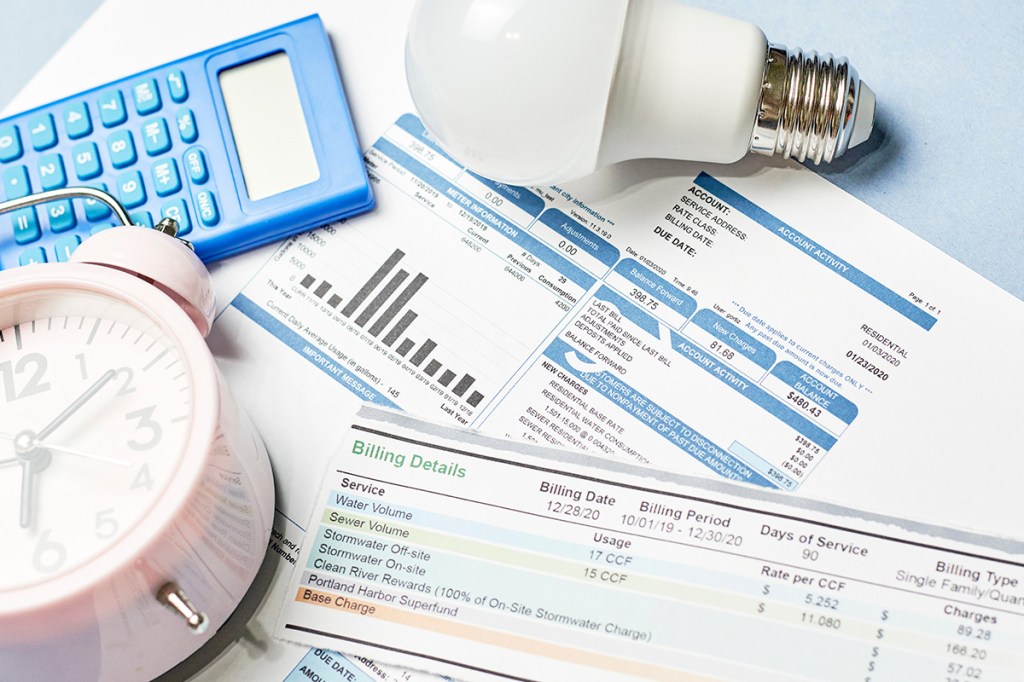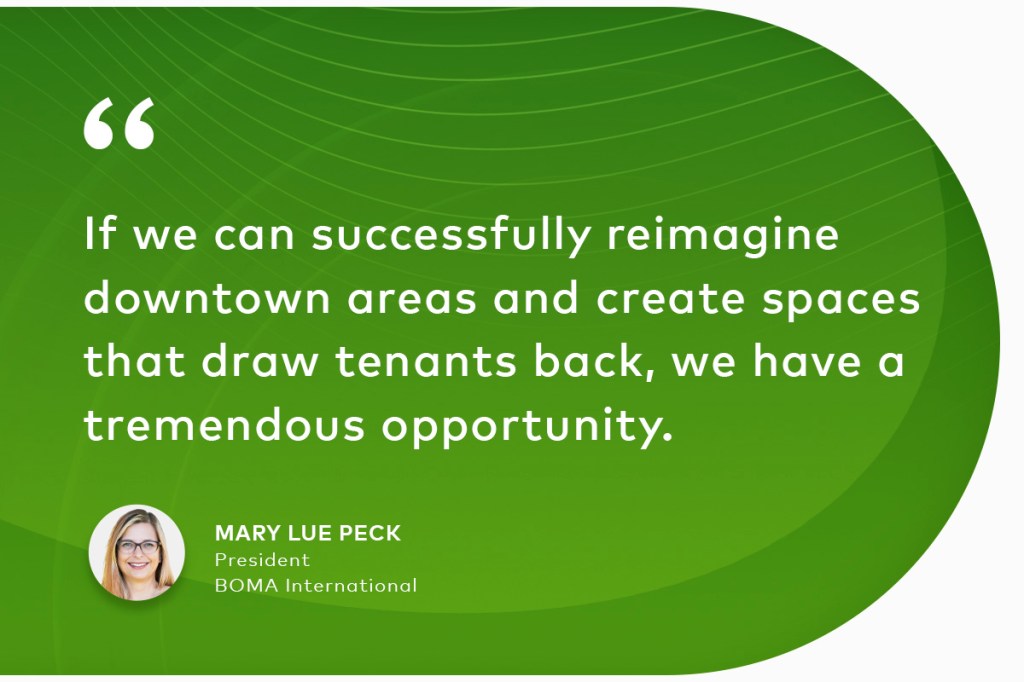
What is an energy audit? It’s not exactly a new concept. People involved with building energy efficiency have been doing audits for over 40 years. Audits started in earnest in the late 1970s and early 80s, stemming from the cost and energy strains of the oil embargoes and energy crisis of the 1970s.
Auditors started looking at HVAC systems, lighting systems, water heating systems, cooking systems and the building envelope. Over the past 40 years, the process has become increasingly refined. There are now certified professionals you can call to survey buildings and properties and identify opportunities for energy savings.
In this article, we’ll cover what property managers need to know about energy audits to save on utility bills. You’ll also see what we’re doing with energy use data to make saving money faster and easier.
If you’re looking to save on your bills and could benefit from leading energy solutions for property owners and managers, this article is for you.
Levels of energy audits
The American Society of Heating, Refrigerating and Air-Conditioning Engineers (ASHRAE) sets standards for building-related matters, including how to conduct an energy audit. If a property manager or owner says they need an energy audit, they can expect one of three types: ASHRAE Levels 1, 2 or 3.
A Level 1 audit is a cursory look, often called a “treasure hunt.” Certified professionals walk through a property and quickly identify opportunities for improvement without doing a deep dive into analytics. They might suggest replacing old incandescent or fluorescent lighting with LED lights, upgrading inefficient heating and air conditioning systems or addressing issues with single-pane windows or better door seals.
A Level 2 audit involves a deeper dive. It includes everything in a Level 1 audit plus more detailed analytics. For example, the auditor might examine a heating and air conditioning system in greater detail, identifying more precise areas for improvement.
A Level 3 audit dives deeper still, and the analytics become extremely detailed and precise. For example, they might use SEER (Seasonal Energy Efficiency Ratio) or EER (Energy Efficiency Ratio) ratings to measure air conditioning efficiency. The higher the SEER/EER, the more efficient the system.
ENERGY STAR® benchmarking & why it matters
Yardi offers a benchmarking service using the U.S. Environmental Protection Agency (EPA) ENERGY STAR Portfolio Manager. Here’s what that means for property management companies looking to save on utility bills.
If you’re a Yardi Breeze Premier client, you may be using our Yardi Utility Invoice Processing solution. This solution automates utility invoice processing to save our clients money and time, extracting your data for electric, gas, water and other metered utilities. The data is automatically entered into our Utility Invoice Processing system, and ENERGY STAR crunches the numbers. As a result, you see all the energy-related data you need to make informed decisions about your property.
ENERGY STAR scores properties on a scale of 1 to 100. A score of 100 means very energy efficient while 1 means not efficient at all. If you score 75 or higher, you qualify for ENERGY STAR certification. This can be used to market your property as one that will save renters money on energy. It also tells eco-conscious tenants that you care about the impact your property has on the environment.
How an energy audit takes place
We offer ENERGY STAR benchmarking and provide data to our clients. They, in turn, offer this data to professional engineers or certified individuals from an organization like the Association of Energy Engineers (AEE) who perform energy audits. AEE offers Certified Energy Auditor (CEA) and Certified Energy Manager (CEM) certifications, among others. Certified experts conduct the energy audit, analyze utility data and make recommendations.
For residential properties, there are the Building Performance Institute (BPI) and the Home Energy Rating System (HERS), which certify professionals to conduct site visits. They also analyze equipment, gather data and generate reports.
How a water audit takes place
Water audits are a bit different. They involve experts evaluating fixtures like aerators, showerheads and toilets, especially in drought-stressed areas like Phoenix or Los Angeles. The EPA’s WaterSense program sets standards for water efficiency with properties built since 1994.
What gets measured in an energy audit?
In the U.S. and Canada, there are many energy-saving platforms that require use of the ENERGY STAR Portfolio Manager. These tools require buildings to input their attributes and metered monthly data such as kilowatt hours of electricity, therms of gas and gallons of water. Portfolio Manager compares your building against similar buildings in your area using this data.
Incentives for energy efficiency upgrades
Utilities sometimes offer rebate programs to incentivize efficiency upgrades like lighting retrofits. These rebates can lower the initial cost and shorten payback periods, making improvements more attractive to property owners. For example, the New York State Energy Research and Development Authority (NYSERDA) program sponsors contractors to conduct energy audits and may even provide certain technologies for free, including LED light bulbs or low-flow showerheads.
The federal government also supports these efforts through programs like the Weatherization Assistance Program (WAP), which provides funding for energy audits and improvements, especially for affordable housing. These programs help reduce energy and water consumption, lower costs for tenants and provide financial incentives to property owners.
Energy savings make you more marketable
Properties with an ENERGY STAR certification can attract and retain tenants who prioritize energy efficiency. Clients have reported that tenants prefer properties with the ENERGY STAR certification because they expect lower energy and water bills, making these properties more desirable. The analytics provided by Yardi offer a clear path to making the improvements that tenants value.
Are energy audits mandatory?
An energy audit may be mandatory, depending on a lot of factors. Under the ENERGY STAR scoring system, a rating of 50 is at the median for energy consumption. Half of the buildings in your peer group are more energy-consuming and half are less so.
In some cities, including Los Angeles, the process stops there as long as you certify and report to the city. For water, buildings that have already made water improvements in the last five years or have shown water reduction through progressive programs can be exempted from further requirements.
If you meet these criteria, you only need to certify every five years. If you don’t meet these criteria, a Level 2 energy audit and a Level 2 water audit may be required.
Yardi helps clients get the best possible ENERGY STAR score and recommends hiring an energy auditor if necessary. We provide all consumption data to the auditor. This collaborative approach helps identify the best savings opportunities. Ideally, after implementing improvements, the building’s efficiency will increase. This will allow it to achieve a higher score and potentially avoid repeated audits.
What if your energy benchmark score is low, but an energy audit isn’t required?
Even if not mandated, scoring below 50 suggests you should consider an energy audit. The audit can reveal potential savings and efficiency improvements. Often, the business case is compelling. For instance, LED lighting retrofits have become inexpensive, and many programs offer rebates leading to quick paybacks — typically three years or less.
What do property managers need to know about Yardi Energy?
The most important reason to use our energy solutions is the seamless integration of all necessary benchmarking data.
It’s important to consider using our ENERGY STAR benchmarking service, especially if you’re a Yardi Breeze Premier client using Yardi Utility Invoice Processing. This service allows you to take the energy data we collect and put it into the ENERGY STAR Portfolio Manager program to score your property.
This benchmarking helps you understand how your property performs and identify areas for improvement. Financing institutions such as HUD’s green financing programs, Freddie Mac and Fannie Mae require an ENERGY STAR score or energy audit for their funds. They believe good energy management correlates with high-quality property management.
We can also request whole building data from local utilities where required. This streamlines the process, making it easier to benchmark and manage your property’s energy efficiency.
Recap: What analytics can reveal to property managers
Energy and water usage trends: Get detailed data on energy and water usage. Property managers can easily spot trends and anomalies, helping to identify when and where consumption spikes occur.
Identifying inefficiencies: Data can highlight buildings that are less efficient compared to others in your portfolio. This insight allows you to prioritize problematic buildings for further investigation and improvement.
Cost savings opportunities: By pinpointing inefficiencies, the analytics can reveal opportunities to lower utility bills for tenants and reduce operating costs. This might include upgrading to more efficient systems or addressing specific issues like leaks or outdated equipment.
Course of action for energy audits: The analytics can help you decide whether an energy audit is necessary for certain properties. Rather than auditing every building, you can focus on those that the data indicates are underperforming.
Benchmarking against industry standards: Using tools like ENERGY STAR benchmarking, you can compare your properties’ performance to industry standards. This makes it easier to identify improvements and/or validate the effectiveness of your current energy management practices.
Using energy analytics, property managers can make informed decisions to enhance energy efficiency, reduce costs and improve tenant satisfaction. This targeted approach ensures that you focus on the areas that need improvement while maintaining high-performing properties.
We’d like to thank Ray Segars for his contributions to this article. Ray is a Yardi Solutions Consultant who knows energy inside and out. He can also speak to energy-related best practices nationwide or in select regions. We appreciate his expertise!
Want more ways to save? Check out 51 Ways To Save Water & Energy At Your Properties for tips on reducing your utility bills and energy consumption.



